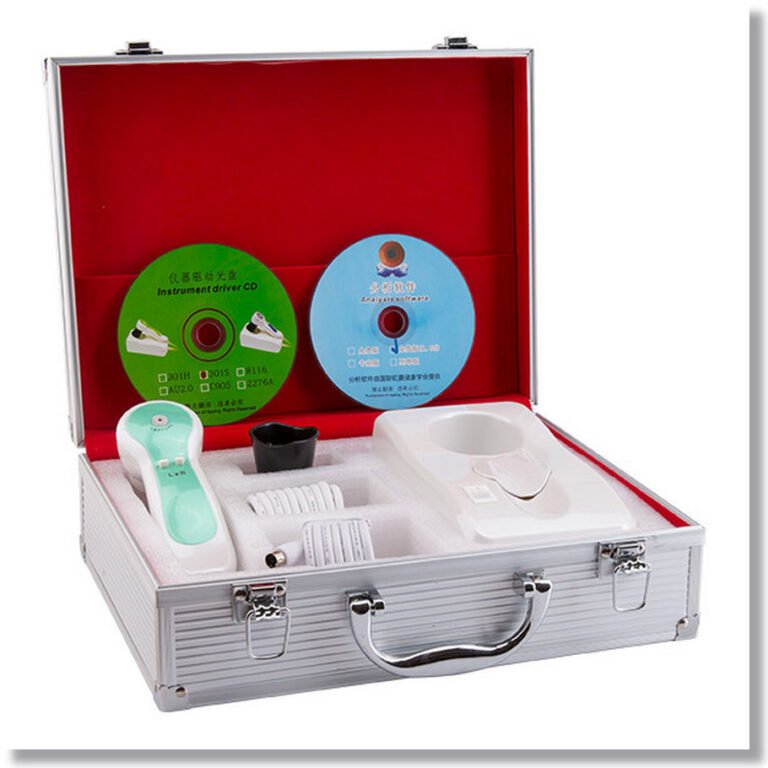Natural Therapy which Studies the Iris to Reflect Human Health and Susceptibility to Disease. Color Eye Charts, Map, HistoryThe study of Iridology asserts that through studying markings in the iris one can learn about the inner workings of the body.
The word “iris” is Greek and means “rainbow” or “halo.” The iris is the colorful portion of the eye that surrounds the pupil.
Every fiber, color, pattern, and defect in the iris is believed to have a reflex correlation with a disease manifestation or organ system malfunction. By studying the eye, Iridologists can reveal a patient’s overall state of health, as well as their tendencies toward inherited disease and possible future problems.
The left eye is believed to correspond with the left side of the body and the right eye with the right side of the body. In general, the higher organs (brain, thyroid) are at the top of the iris and the lower organs (kidneys) are at the bottom.
Iridology is used as more of a diagnostic tool than a treatment. It is not a medical exam or a definitive diagnosis of disease. Rather, it proposes to recognize:
* Toxins and their locations
* Stages of Inflammation
* Inherent Weakness or Strength
* General Health level
* Biochemical Deficiencies

In reading the iris to gain insight to the body there are several characteristics that are studied. These include, but are not limited to layers, colors, rings and spots.
Layers
A primary theory of Iridology is that the iris is constructed in layers that represent the four stages of tissue activity.
* Acute changes
* Sub-acute changes
* Chronic changes
* Degenerative changes
COLORS
There are 3 main physical eye types:
● Blue-Eyed Type (Lymphatic): At increased risk for problems with the upper respiratory tract, digestive tract, urogenital tract, lymphatic tissues, joints, kidneys and adrenal gland imbalances.
● Mixed-Eye Type (Biliary): This type has discolorations (usually light brown) on top of a blue background. They are at increased risk for liver related problems, digestive tract problems and allergies.
● Brown-Eyed Type (Hematogenic): This type is predisposed to blood disorders and imbalances of minerals, especially calcium. This type should pay attention to the circulatory system, liver, spleen, bone marrow, digestive system and endocrine glands.
Colors over certain areas on the iris correspond to the area of the body as indicated by the maps. You can then decide what types of changes are occurring.
* White indicates an area of the body working hard to “maintain.”
* Yellow-white indicates an area of the body losing a battle.
* Yellow indicates poor kidney function; yellow sclera (white part of the eye) suggest gallbladder disease.
* Orange indicates problems metabolizing carbohydrates and weakness in the liver and/or pancreas. Glucose levels should be checked.
* Red-brown indicates deterioration.
* Brown indicates poor liver function and “dirty blood.”
* Black indicates dying tissue.
RINGS
There are numerous rings seen in the iris. Here are a few of the main ones.
* Scurf Rim or Ring of Purpose is a dark band around the iris, indicating that the skin is not functioning properly. These people do not sweat easily (lack of detoxification), have increased mucous production and kidney stress. They are “thick-skinned” emotionally.
* Stress Rings or Rings of Freedom look like growth rings on a tree. They indicate neuro-muscular tension and stress. These people tend to be perfectionists and are highly active and accomplishment-oriented.
* Lipid Ring or Ring of Determination is a heavy white ring partially or completely covering the outer edge of the iris. This ring is mostly found in older people, and it is indicative of arteriosclerosis and other cardiovascular problems. It can also indicate problems with the liver and thyroid, and an increased risk of Parkinson’s Disease. These people tend to be stubborn.
* Lymphatic Rosary or Ring of Harmony looks like a tiny ring of clouds around the outer iris. These people have lymphatic congestion and swollen lymph nodes. Perhaps the person with this ring is not getting enough exercise for the particular body parts underlying the ring. These people internalize others’ problems to make everything appear harmonious, as they dislike conflict and tension in their environment.



















